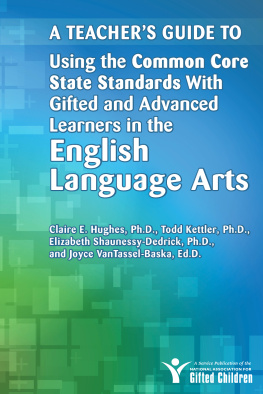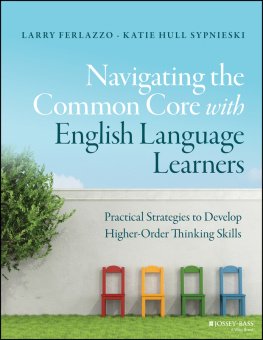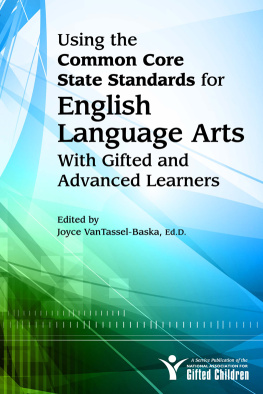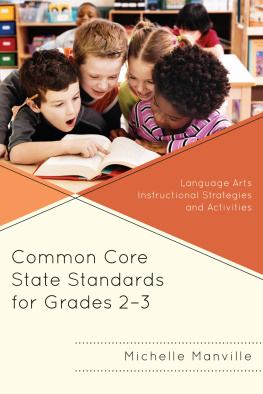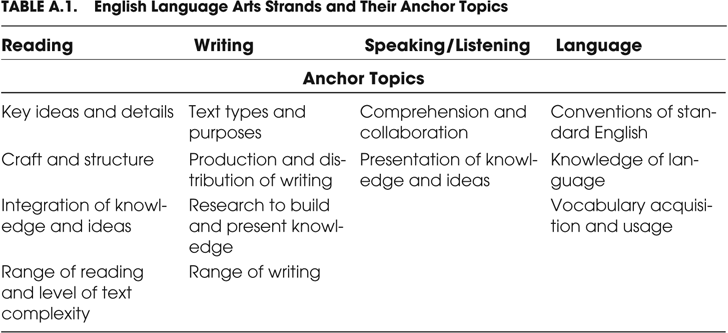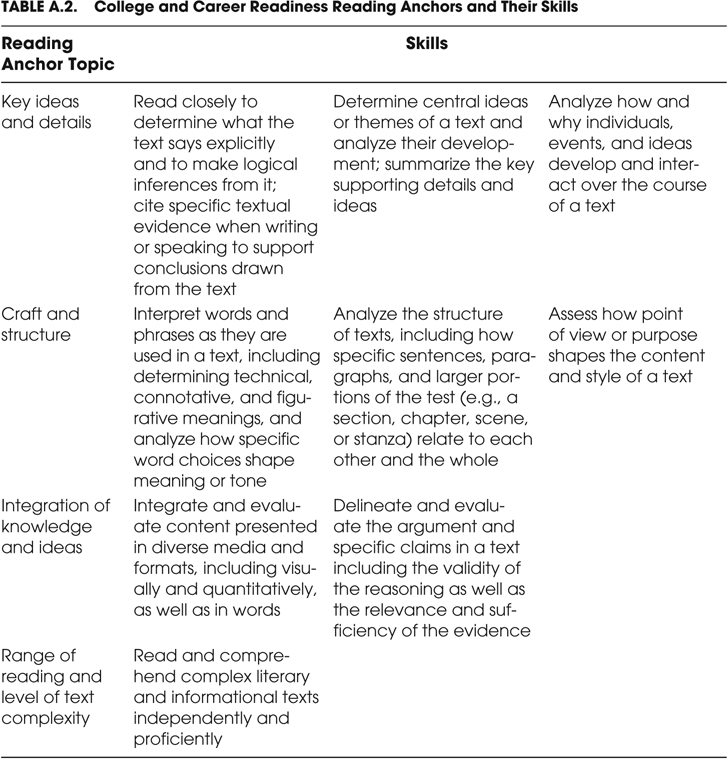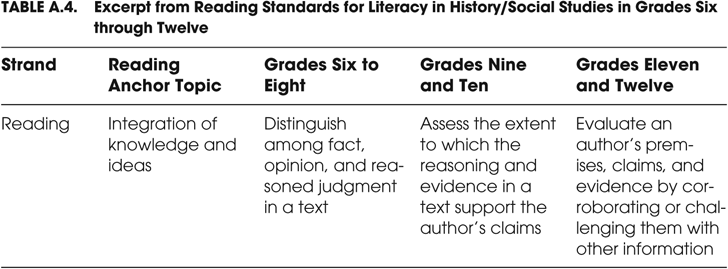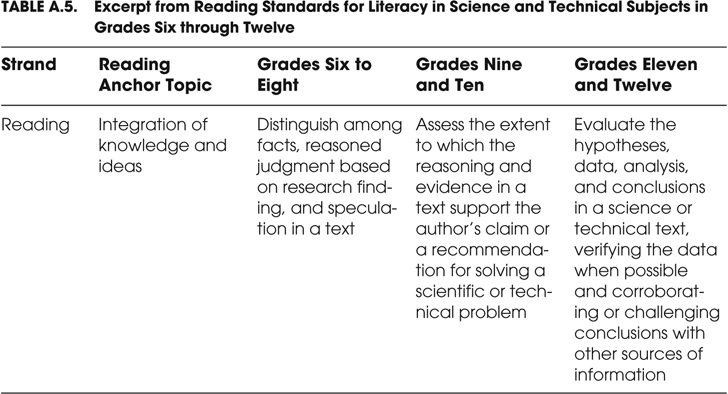About the Author
Marie Pagliaro is a professional development consultant. She was full professor and director of the Teacher Education Division at Dominican College; chair of the Education Department at Marymount College; supervisor of student teachers at Lehman College of the City University of New York; and chair of the Science Department and teacher of chemistry, general science, and mathematics in the Yonkers Public Schools.
Appendix A. An Overview of the
Common Core State Standards
The Common Core State Standards (CCSS) were developed under the sponsorship of the National Governors Association and the Council of Chief State School Officers to better prepare our students for college and careers. Based on the strengths of prior state standards, the CCSS provide more rigorous research-based standards that focus on the application of higher cognitive skills. The standards are internationally benchmarked so that our students will be competitive in the twenty-firstcentury global economic society.
Two main categories of standards comprise the CCSS: English Language Arts (ELA)/Literacy and Mathematics.
English Language Arts/Literacy
The ELA/Literacy standards specify that students should develop cognitively complex skills. These include the ability to:
- Analyze how and why individuals, events, and ideas develop and interact over the course of a (reading) text.
- Integrate and evaluate content presented in diverse formats and media, including visually and quantitatively, as well as in words.
- Read and comprehend complex literary and informational texts independently and proficiently.
- Develop and strengthen writing as needed by planning, revising, editing, rewriting, or attempting a new approach.
- Use technology, including the Internet, to produce and publish writing and to interact and collaborate with others.
- Conduct short as well as more sustained research projects based on focused questions, demonstrating understanding of the subject under investigation (www.corestandards.org).
To accomplish these skills, the ELA/Literacy standards are organized by four strands: Reading (including Foundational Skills), Writing, Speaking/Listening, and Language. These four make up a set of College and Career Readiness (CCR) Anchor Standards and describe in broad terms what students should know and be able to do in grades kindergarten through twelve.
Each strand contains the same set of anchor topics that apply throughout grades kindergarten through twelve. Table A.1 summarizes the topics for all ELA anchors.
Skills for each anchor topic are then made more specific. Table A.2 shows the skills and understandings for the Reading anchors, as listed in the left column of Table A.1.
For each grade level, the depth of the anchor topics increases. To illustrate, examine how the Reading anchor topic in Table A.3, craft and structure, develops with more substance across grades kindergarten through two. Grades three to twelve continue to increase the depth of knowledge and ability for that same topic .
There are two exceptions to the Reading anchor structure:
- The Reading anchor offers an additional level of topics in order to accommodate the difference between reading texts for information as opposed to reading literature .
- It was already indicated that Reading includes Foundational Skills, a nonlinked set of skills. These include print concepts and phonologic awareness for kindergarten and first grade, and phonics, word recognition, and fluency for kindergarten through fifth grade. Reflected in the CCSS is research based on a report of the National Institute of Child Health and Human Development (2000), which has specifically indicated that students in grades three to five should acquire and build an understanding of phonics, word analysis skills, and develop their fluency by reading independently and analyzing how syntax and text meaning influence expression and phrasing.
The CCSS present some major ELA/Literacy shifts. For Reading, text level complexity increases throughout the grades to close the discrepancy between the text difficulty level used before the CCSS and what is expected in college and in the workplace (career readiness).
Whereas the original state writing standards focused on persuasion, the CCSS Writing anchor adds argument, information/explanatory texts, and narratives, with argument and information/explanatory writing expected across the curriculum. Students must engage in critical thinking and consider multiple points of view to prove claims that would influence a reading audience.
For Speaking/Listening, the shift occurs in having students communicate effectively in whole class, small group, and one-to-one settings, and in using multisensory (including technologic) ways to analyze and interpret messages.
The Language anchor distinguishes between general academic vocabulary, words used in academic/professional writing but infrequently in common speech, and domain-specific vocabulary, which are words specific to a particular academic discipline.
What is particularly unique about the CCSS is that there is a separate set of literacy standards (reading and writing) for History/Social Studies, Science, and for technical subjects in grades six to twelve. (Technical subjects include Music, Art, Foreign Languages, Physical Education, Industrial Arts, Business, etc.) The addition of Reading and Writing emphasizes the importance of all teachers transferring literacy skills across these subjects.
Table A.4 is a sample of how standards from one of the Reading anchor topics, integration of knowledge and ideas, build across grades six through twelve.
Table A.5 shows how the standards from the same Reading anchor topic, integration of knowledge and ideas, are applied in science and technical subjects across grades six to twelve.
Table A.6 is a sample of how standards from one Writing anchor topic, production and distribution of writing, build across grades six to twelve.
To assist in the clarity and implementation of the CCSS, the Common Core State Standards Initiative (www.corestandards.org) offers three appendices. Appendix A provides the research base for the standards and a glossary of key terms with their explanations. Appendix B offers a comprehensive list of reading texts (literature and informational) for all levels and subjects and sample student performance tasks. Appendix C shows annotated samples of student writing (opinion, argument, information/explanatory, and narrative) from grades kindergarten through twelve.
HOW TO READ THE ENGLISH LANGUAGE ARTS/LITERACY STANDARDS (Common Core State Standards Initiative, N.D.)
The CCSS contain three main sections: a comprehensive kindergarten through grade five section (cross-disciplinary), a content areaspecific section for grades six to twelve in ELA, and a content areaspecific section for grades six to twelve in History/Social Studies, Science, and Technical Subjects (Table A.7).


